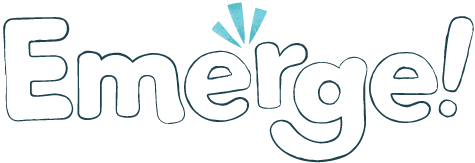1. Model Routines
Students receive targeted and explicit modeling from a variety of phoneme awareness, decoding, encoding, and high-frequency word routines.
1. Model Routines
My Account Details
Log In to My PreK-12 Platform
Log In to My Higher Ed Platform
My Account Details
Log In to My PreK-12 Platform
Log In to My Higher Ed Platform

The Emerge! instructional model takes an explicit, systematic approach to teaching foundational skills, comprehension and knowledge building, and writing about texts and topics—cohesively connecting the strands needed for skilled reading and writing.
For K–1 classrooms, Emerge! guides students and teachers through 12 three-week long units. Each strand draws on research-based routines and a gradual release framework to transform leading literacy research into actionable practices.

(45–50 minutes)
Foundational skills are critical to building lifelong literacy; without them, complex learning cannot take place. With instruction and time, these skills become increasingly automatic, working in tandem to help students grow into skilled, fluent readers and writers.
Our goal is to make teaching foundational skills as easy and efficient as possible with explicit, systematic, cumulative instruction—a proven strategy for helping students acquire foundational knowledge. As such, our instruction centers on a clear, consistent set of routines that follow a gradual release process to slowly transition students toward independent practice:

Students receive targeted and explicit modeling from a variety of phoneme awareness, decoding, encoding, and high-frequency word routines.
1. Model RoutinesGuided instruction and immediate corrective feedback from the teacher support students as they develop their skills and move toward independent practice.
2. Guide PracticeStudents move toward automaticity, transferring what they’ve learned from isolated word reading to connected texts.
3. Move Toward Automaticity